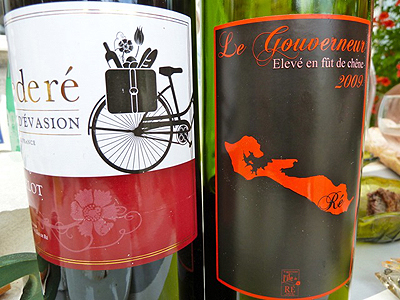- Home page
- Tourism
- Tasting
- Gastronomy of Charente Maritime
- Tasting
- Tourism
Delicacies between Land and Sea

©tsach - Fotolia.com
The Charente-Maritime is renowned mainly for its oysters. Marennes-Oléron is Europe's most prominent oyster production area with 40,000 acres of oyster beds and “claires” (refining process). These produce 45,000 to 60,000 tons of oysters every year for the worldwide market.
Oysters usually mature over four years. During the first year they are left to grow in the sea. The following year, in order to benefit from the best conditions, they are moved around several times in the breeding beds, according to currents and tides. The final stage is the "affinage en claire". This is the refining process. At this stage they are placed in what were once marshes. Oysters remain in the "claire" where fresh and sea water blends together for one to three months. The end result is oysters with a delectable taste that is world renowned. Marennes-Oleron oysters have a PGI. (The protected geographical indications identify an agricultural product, raw or processed, whose quality, reputation or other characteristics are linked to its geographical origin).
Mussel farming is a thriving industry on the île d’Oléron, Fouras and the coastline near Brouage. La moule de Bouchot (pilings erected at sea) is the most widespread kind of mussel production in Marennes-Oléron. Here, mussels grow in the sea. They grow on a rope which is tied on to the pilings in a spiral. Since 2005, Marennes-Oléron's moule de bouchot bears a certification as a guarantee of its quality, reaching the highest hygiene standards. This trade classification means that A-category mussels can be sold directly to the public.
They can be consumed in various ways: “mouclade charentaise” (creamy mild curry sauce), “mariniere” (white wine, parsley and fresh cream) or in “eclade” (cooked in pine needles).
Shellfish and fish are also available to the gourmet. Closer to the Marais Poitevin, eel can be prepared in “matelote” style with white wine.

Early potatoes and their very specific taste are grown on the île de Ré. Cultivated in sandy ground, it is a small potato, slightly iodized, with delicate skin and firm flesh. It is available in May and June.

©JONATHAN - Fotolia.com
Salt and glasswort (eaten like a condiment in vinegar or uncooked) are harvested in the salt marshes on the île de Ré and the île d’Oléron.

Coming back to mainland Charente-Maritime, Surgères butter is a renowned product. On the cheese side, the speciality of Rochefort is the Jonchée, made from cow’s milk (curd) presented on a bulrush mat from the marshes.
Cognac and Pineau are both symbols of this area.
Cognac, a famous brandy obtained from white grapes, was created during the 17th century and requires a certain know-how. The drink is aged in oak barrels and has different appellations: three  stars or VS, which is the youngest brandy, is aged for at least two years; the VO, VSOP and Réserve is aged for at least 4 years; the XO, Vieille réserve, Napoléon and Extra, are aged for at least 6 years; and the fine champagne cognac, which only comes from the vineyards of the Grande Champagne or Petite Champagne areas are aged for 20-30 years at least. Cognac is graded according to the quality of the soil in which the grape is grown.
stars or VS, which is the youngest brandy, is aged for at least two years; the VO, VSOP and Réserve is aged for at least 4 years; the XO, Vieille réserve, Napoléon and Extra, are aged for at least 6 years; and the fine champagne cognac, which only comes from the vineyards of the Grande Champagne or Petite Champagne areas are aged for 20-30 years at least. Cognac is graded according to the quality of the soil in which the grape is grown.
White or rosé, pineau, is the aperitif drink in the Charente-Maritime. It was created by combining grape juice with cognac. It is aged in oak barrels for one year.
 The île de Ré produces a “vin de pays" (local wine), with a seaside hint, thanks to its 650 hectares of vines planted in the south of the island. Red, white, rosé, they all taste of the holidays.
The île de Ré produces a “vin de pays" (local wine), with a seaside hint, thanks to its 650 hectares of vines planted in the south of the island. Red, white, rosé, they all taste of the holidays.
"This lands combines the tastes that awaken our senses”
OUR CITY GUIDES IN EUROPE


